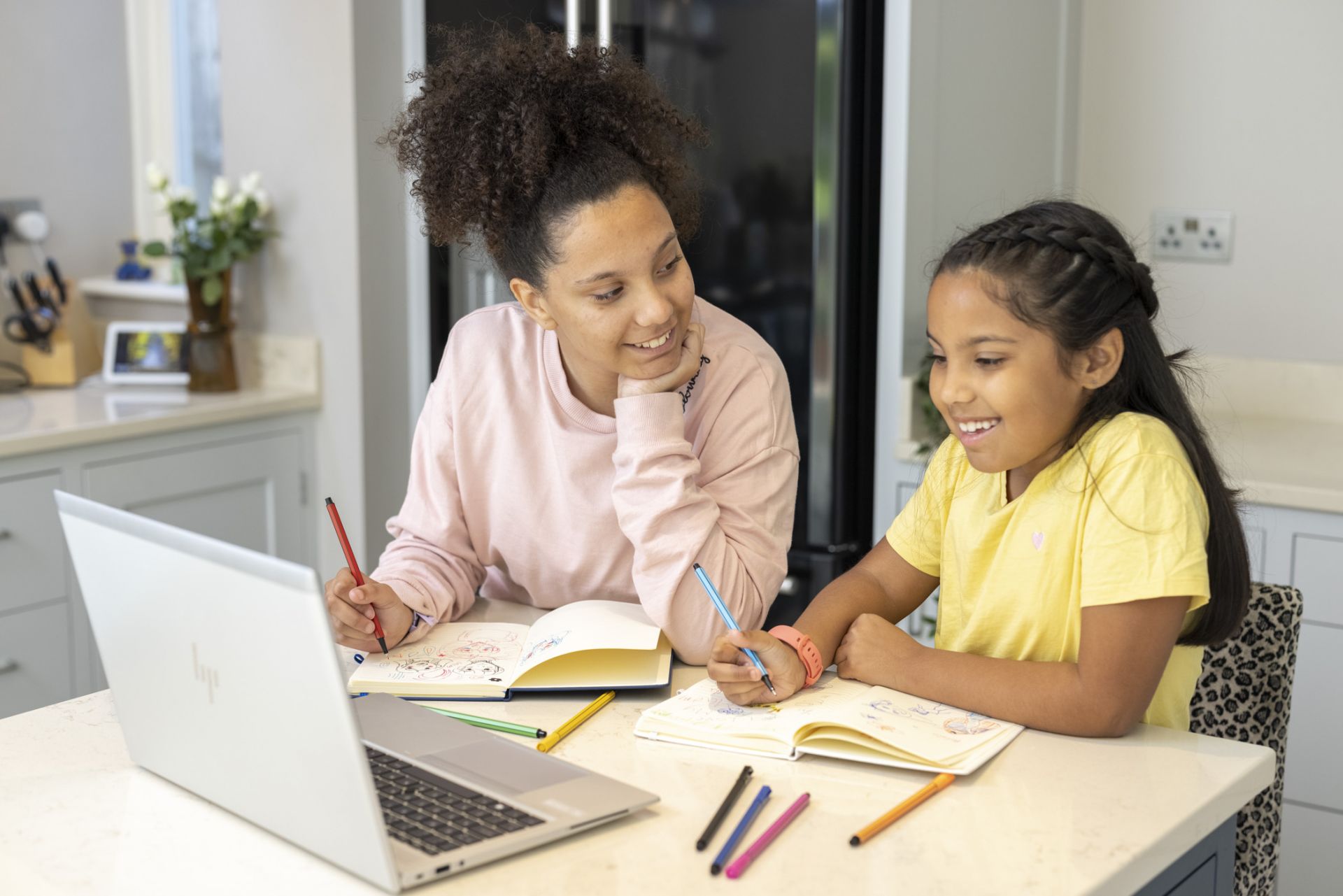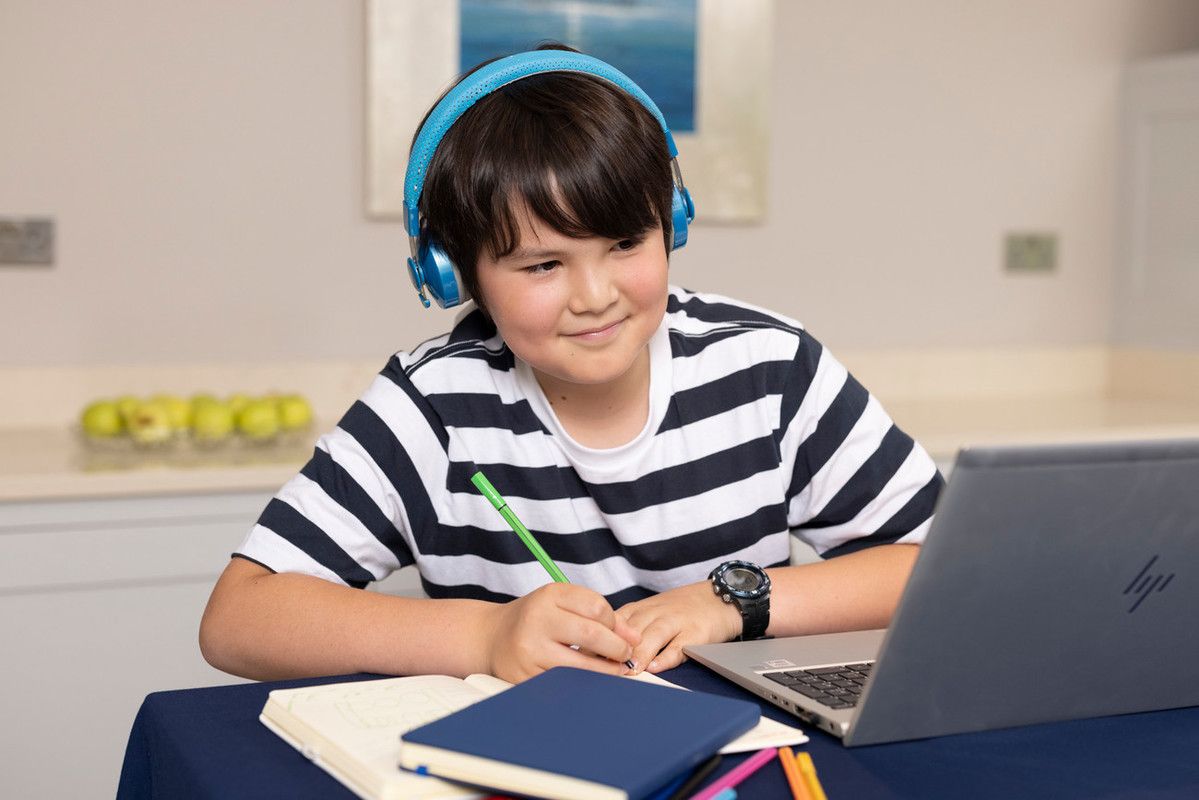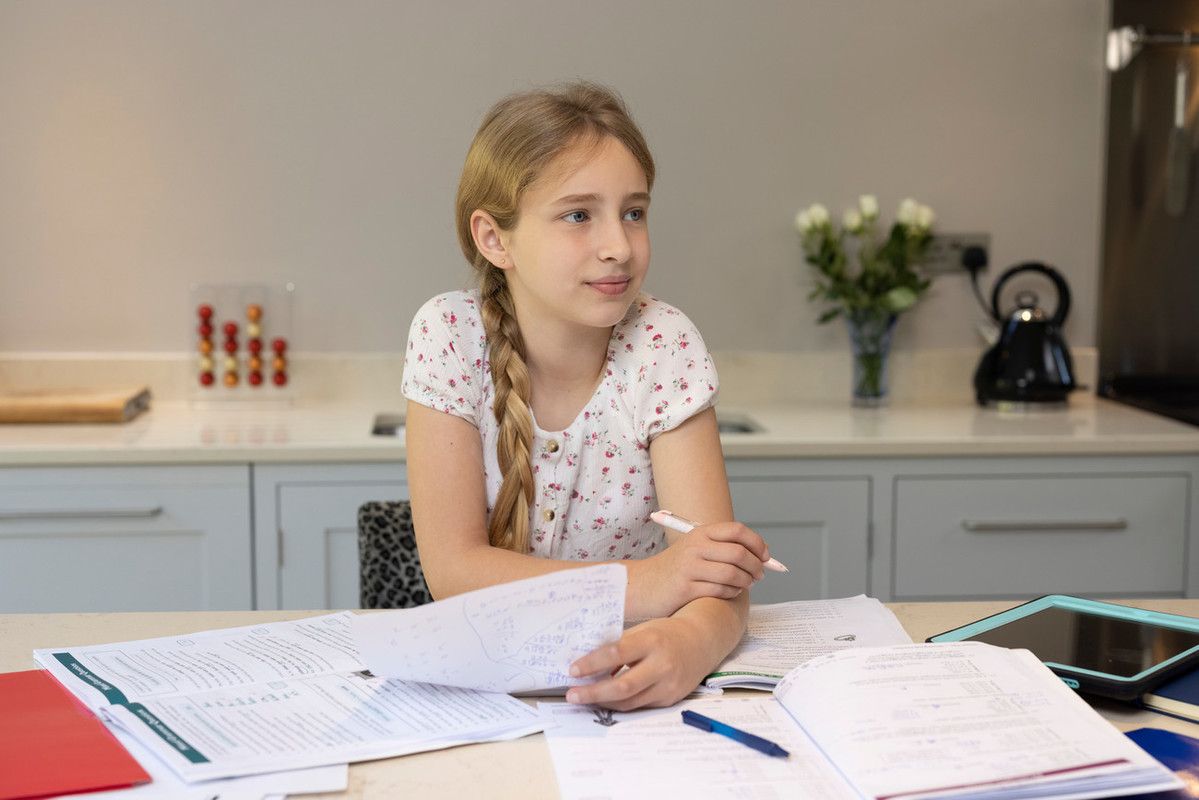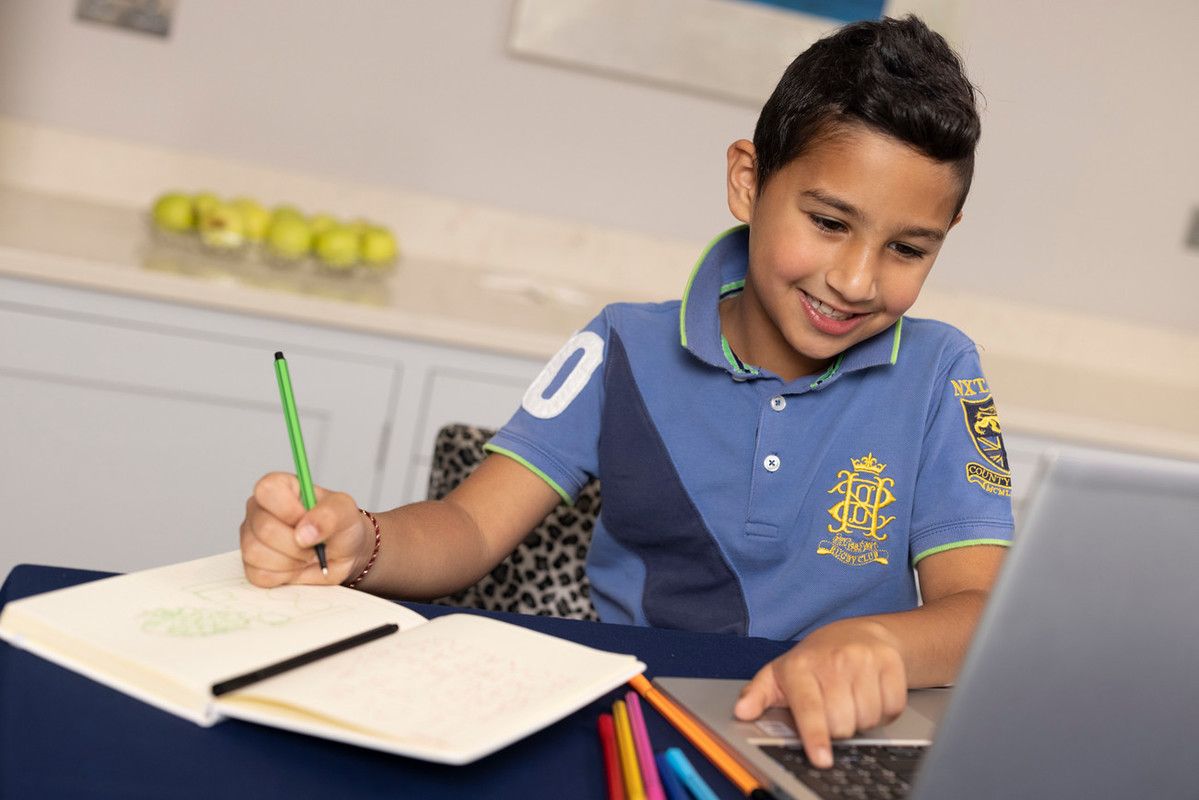
Article January 21, 2022
How to create the perfect study space | Online School 101
Why is creating a great study space so beneficial for students enrolled in online schooling? Students who enrol at King’s InterHigh can learn anywhere, and flexibility is one of the key reasons why online school is such a great choice for many families. Our young athletes may tune into a class between sessions at their training centre, while our expatriate students never have to miss a lesson no matter how often they fly abroad.
Of course, where possible, it’s still great to give your child a consistent study space where they can take most of their online classes. A well-planned school study area gets students into the learning mindset, makes the school day more efficient, and boosts focus and motivation.
Thankfully, creating this study space doesn’t need to be expensive or complicated. Even following just a few of these simple tips will make your child’s online school learning experience even better.
1. Tailor the space to your child
When you’re setting up a study area for online schooling, nothing is more important than considering your child’s individual needs. All children have their own ways of learning, so don’t be misled by study space design tips that claim to fit every student.
For example, many students focus best while sitting at their desk in a quiet environment. However, there are also numerous students out there who feel demotivated when they have to sit still in a room on their own. Instead of the typical static desk and chair in a home office, active learners may benefit from a standing desk, a study space in the family living room, or even the option of using an exercise ball as a seat.
One of the best benefits of online school is that students can learn in a way that suits them best, so why not create an individualised study space to support them?
2. Choose the right location
If you’re not sure where to set up your child’s study area, there are a few key considerations to keep in mind. First, you’ll need to choose a space big enough to fit a desk and a chair. Ideally, you should also pick a spot with power outlets nearby, as your child will need to plug in their computer to attend classes each day.
Essentials aside, the right location all depends on your child. For students who thrive in quiet and solitude, try to choose an area your family doesn’t use too often. This could be a home office, a wide hallway, or your child’s bedroom.
If your child wants to be around family while studying or you’d like to keep an eye on them during the day, try setting apart a quiet corner in your living room, kitchen, or dining room. In small family rooms, use foldable or pull-out furniture to keep the space usable when the school day is over.

3. Keep distractions to a minimum
What’s great about online schooling is that students no longer get distracted by classroom disruptions. Teachers don’t have to pause lessons to deal with misbehaviour, and there’s no idle chatter to get swept up in. Of course, you’ll want to minimise distractions in your home too.
If your child wants to learn in a busier space like a living room or kitchen, try using foldable room dividers to separate learning from leisure. Ideally, you’ll want to position your child’s desk facing a wall or window so they don’t notice everything going on around them indoors. Noise-cancelling headphones are also a great way to keep students from getting distracted by what’s going on at home. For children with younger siblings, a baby gate can be invaluable.
4. Pick ergonomic furniture
If you have the money to invest in new furniture, make sure to choose an ergonomic desk and chair to keep your child comfortable and their body healthy. Plastic school seats are often uncomfortable, but at home, you can choose a cushioned chair with strong back support. As for your child’s desk, keep size in mind. A desk should sit at the right height for your child’s position and be large enough to position their computer screen at least an arm’s length away.
To save money, consider buying an adjustable chair and desk that can grow with your child. If new furniture isn’t a possibility right now, you can also get similar effects by using a keyboard stand and cushioning your child’s seat with pillows.

5. Make sure essentials are nearby
Every time your child has to leave their desk to grab a pen or a calculator, their attention gets pulled away from learning. That’s why it’s a great idea to make sure all your child’s essential supplies are within reach. Pens and paper, a headset and webcam, and textbooks are all some items you may want to keep on, above, or below the desk.
Don’t forget that your child’s list of essentials may include non-educational items too. Do you have a teen on the autism spectrum who uses fidgets or stim toys throughout the day? Make sure you keep those toys in a nearby container. Does your child often get up to grab snacks or water? Consider placing a mini-fridge or snack box beside the desk.
6. Organise everything
Even for students who work best in relative ‘chaos,’ it’s always good to have a way to keep things organised. Plastic boxes, shelves, drawers, and hooks are all great ways for children and teens to keep their study supplies out of the way during classes.
It’s just as important for students to keep their school days organised too. Calendars, alarm clocks, and planners can be invaluable for those who struggle with time management and deadlines, such as children with ADHD.

7. Don’t forget about lighting
Lighting is one of the most overlooked aspects of many home study spaces, but it’s also one of the most important. Over the years, research has shown that good lighting can improve students’ concentration, attitudes to learning, and even their grades.
Ideally, you’ll want to embrace as much natural light as possible in your child’s online school study area. Try to position your child’s desk near a window if you can, but try to avoid windows behind the desk. Sunlight hitting your child’s computer screen can lead to glare, making it difficult to see what’s going on in a lesson.
Next, there are two key types of artificial lighting you’ll need to think about: ambient or general lighting and task lighting. Ambient lighting is typically provided by ceiling lights or wall sconces and should be bright enough to comfortably light up the whole room or study area. Task lighting, meanwhile, directs light to a specific area of focus. This can be great for keeping students on-task while they learn. Desk lamps are one of the most common task lighting choices, but you can also use pendant lighting or small wall lamps.
When choosing bulbs, try to opt for a cool white colour temperature (usually labelled 4,000 to 6,500K on the box), as this replicates natural sunlight most closely. Warm, yellow lights tend to feel more relaxing, while cool lights keep students alert and ready to learn.
8. Let your child personalise the space
Last but certainly not least, remember this is your child’s study space. As such, it’s important that they get some say in how it’s designed. Make sure to let your child be part of the process as you decide on location, furniture, and so on. While you’ll get the final say, having some input can help students take ownership of their educational journey.
Some children and teens find stark and lifeless décor uninspiring or demotivating, so don’t be afraid to let your student spruce up their space with wall art and desk trinkets that reflect their interests. A boy band poster, for example, may not seem educationally beneficial from your perspective; however, aspiring toward a great career to afford concert tickets may be exactly what your child needs to stay motivated.
Get a better learning environment at King’s InterHigh
If you know your child would thrive in a better-suited learning environment but haven’t yet made the transition, consider King’s InterHigh. Just as a great learning space is tailored to each child, our teaching and well-being care revolves around each individual student. The King’s InterHigh school environment is flexible and welcoming with expert teachers and a strong British curriculum, guiding thousands of young people on their unique journeys to success.
Learn more about us at one of our virtual open days or contact our Admissions Team for help.





















